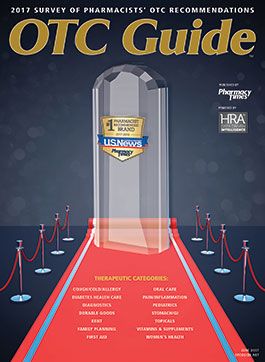Publication
Article
OTC Guide
Herpes Simplex Labialis
Author(s):
Herpes simplex labialis, also commonly referred to as cold sores or fever blisters, is typically caused by the herpes simplex virus 1, whereas herpes simplex virus 2 is generally responsible for causing genital herpes.
Herpes simplex labialis (HSL), also commonly referred to as cold sores or fever blisters, is typically caused by the herpes simplex virus 1 (HSV-1), whereas herpes simplex virus 2 (HSV-2) is generally responsible for causing genital herpes.1,2 However, either form of the virus can cause cold sores or genital herpes if the skin comes in contact with either virus.1,2 Once an individual becomes infected with the virus, the infection is present for life. However, there are periods of dormancy or reactivation phases, and an estimated 30% to 40% of individuals exposed to HSV develop recurrent infections.1,2 Common symptoms include itching, burning, and a tingling sensation a few days before an outbreak of HSL.1,2 An outbreak of HSL can be characterized by the formation of painful, fluid-filled blisters on the lips and/or around the edge of the mouth.1,2 Most cold sore outbreaks are self-treatable and heal without incidence of scarring or complications within 10 to 14 days.2 Triggers such as stress, fatigue, UV radiation, fever, cold, and windburn may increase HSL outbreaks.1
The primary goals in treating HSL include relief from pain and discomfort, as well as prevention of secondary infections and transmission to others.2
Currently, Abreva (docosanol 10%) is the only FDA-approved nonprescription product proven to shorten healing time, as well as the severity and duration of the symptoms associated with HSL.1,2 Docosanol exerts its pharmacologic effect by inhibition of direct fusion between the herpesvirus and the human cell plasma membrane, thus averting viral replication.1,2 Docosanal is for topical use and should be applied at the first sign of outbreak 5 times daily until the sore is gone, but for no more than 10 days.1,2
Pharmacists should educate patients on the contagious nature of HSL lesions and use this counseling opportunity to remind them of ways to prevent or reduce transmission to others.1,2 Moreover, pharmacists are essential in identifying patients who may require further medical treatment from their primary health care provider.
References
- Adkins D. Warts. In: Krinsky D, Ferreri S, et al, eds. Handbook of Nonprescription Drugs. 18th ed. Washington, DC: American Pharmacists Association; 2015.
- Knopp Dlugosz C. Herpes Simplex Labialis. In: Knopp Dlugosz, ed. The Practitioner's Quick Reference to Nonprescription Drugs Washington, DC: American Pharmacists Association; 2012.







